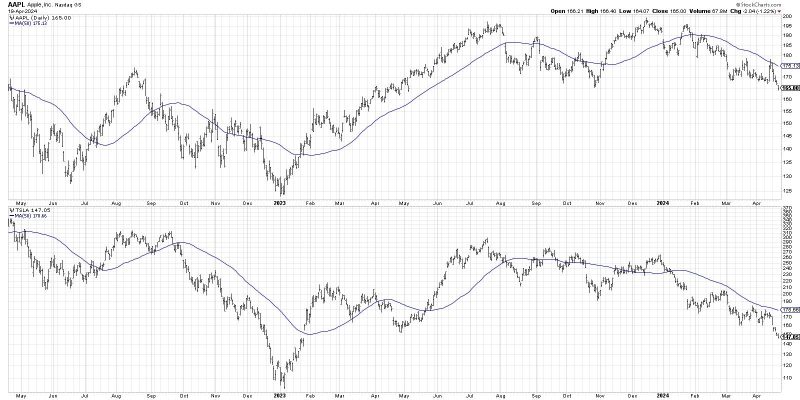In the fast-paced and ever-changing landscape of the global economy, investors are constantly on the lookout for signs and signals that can provide them with valuable insights into market trends and potential risks. Recently, a breakdown in mega-cap growth stocks has raised concerns and confirmed the onset of a bear phase in the market.
Mega-cap growth stocks, which have been the darlings of Wall Street in recent years, are now showing signs of weakness and underperformance. These stocks, representing the largest and most established companies with strong growth potential, have long been viewed as safe havens for investors seeking stable returns. However, the recent downturn in these stocks has sparked fears of a broader market correction.
The mega-cap growth sector includes tech giants such as Apple, Amazon, and Google-parent Alphabet, as well as other industry leaders like Tesla and Facebook. These companies have driven the market higher in recent years, fueled by strong earnings growth and innovative technologies. However, a confluence of factors is now weighing on these stocks and causing a shift in market sentiment.
One of the key factors contributing to the breakdown in mega-cap growth is the rising interest rates environment. As bond yields have climbed, investors have become more cautious about high-growth stocks, which are seen as riskier assets. Higher interest rates can lead to increased borrowing costs for companies, making it more expensive for them to finance growth and reducing their attractiveness to investors.
Additionally, concerns about regulatory scrutiny and antitrust measures have also dampened investor enthusiasm for mega-cap tech stocks. As these companies face increasing pressure from lawmakers and regulators, their growth prospects may be limited, leading to a reassessment of their valuation multiples.
Furthermore, the ongoing volatility in the broader market, driven by geopolitical tensions, inflation concerns, and the lingering effects of the global pandemic, has added to the uncertainty surrounding mega-cap growth stocks. Investors are increasingly seeking defensive positions and diversifying their portfolios to mitigate risk in the face of these challenges.
While the breakdown in mega-cap growth stocks has led to short-term volatility and market turbulence, it also presents opportunities for savvy investors to reassess their investment strategies and reallocate their portfolios. As market dynamics shift, it is important for investors to stay informed, remain agile, and seek opportunities in sectors that may outperform in the current environment.
In conclusion, the breakdown in mega-cap growth stocks confirms the bear phase in the market and underscores the importance of diversification and risk management in investment portfolios. By staying vigilant and adapting to changing market conditions, investors can navigate the challenges ahead and position themselves for long-term success in a dynamic and evolving market landscape.
